Monthly Archives: November 2018
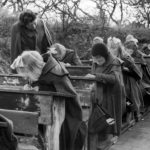 Tuberculosis was a disease that brought terror to the hearts of people over the years…especially right after World War II, but even before World War II, being diagnosed with Tuberculosis was like being given a death sentence. People had to be quarantined, so they wouldn’t infect those around them, since the disease is airborne. All too often it was too late by the time they knew they needed to be quarantined. Any serious disease can be scary for the people in areas affected, but this one was taken to a completely different level. In an effort to prevent Tuberculosis from being passed from child to child, the schools began a new movement, known as the Open-Air School. The movement required the establishment of schools that combined medical surveillance with A method of learning that was adapted to students with pre-tuberculosis…an obsolete term for the pre-clinical stage of tuberculosis. The new institution was established by doctors researching new prophylactic methods, and educators interested in an open air educational experience.
Tuberculosis was a disease that brought terror to the hearts of people over the years…especially right after World War II, but even before World War II, being diagnosed with Tuberculosis was like being given a death sentence. People had to be quarantined, so they wouldn’t infect those around them, since the disease is airborne. All too often it was too late by the time they knew they needed to be quarantined. Any serious disease can be scary for the people in areas affected, but this one was taken to a completely different level. In an effort to prevent Tuberculosis from being passed from child to child, the schools began a new movement, known as the Open-Air School. The movement required the establishment of schools that combined medical surveillance with A method of learning that was adapted to students with pre-tuberculosis…an obsolete term for the pre-clinical stage of tuberculosis. The new institution was established by doctors researching new prophylactic methods, and educators interested in an open air educational experience.
In 1904, Dr Bernhard Bendix and pedagogue Hermann Neufert founded the first school of this kind: the Waldeschule of Charlottenburg, near Berlin, Germany. Classes were conducted in the woods to offer open-air therapy to young city dwellers with pre-tuberculosis. The experiment, conducted by the International Congresses of Hygiene, was immediately attempted throughout Europe and North America: in Belgium in 1904, in Switzerland, England, Italy, and France in 1907, in the United States in 1908, in Hungary in 1910, and in Sweden in 1914. The schools were called “schools of the woods” or “open air schools.” Often they were remote from cities, set up in tents, prefabricated barracks, or re-purposed structures, and were run during the summer. Some of the more noteworthy experiments were the School in the Sun, in Cergnat, Switzerland and the school of Uffculme near Birmingham, England. 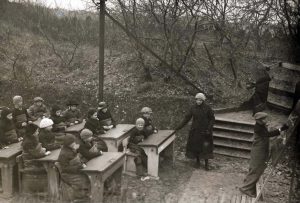 The School of the Sun used helio-therapy in 1910. Dr Auguste Rollier sent the children up to the mountains every morning equipped with portable equipment. The school of Uffculme, noted for its architecture, allowed each class to occupy its own independent pavilion in 1911.
The School of the Sun used helio-therapy in 1910. Dr Auguste Rollier sent the children up to the mountains every morning equipped with portable equipment. The school of Uffculme, noted for its architecture, allowed each class to occupy its own independent pavilion in 1911.
After World War I the movement became organized. The first International Congress took place in Paris in 1922, at the initiative of The League for Open Air Education created in France in 1906, and of its president, Gaston Lemonier. There were four more congresses: in Belgium in 1931; in Germany in 1936, marked by the involvement of German doctor Karl Triebold; in Italy in 1949; and in Switzerland in 1956. National committees were created. Jean Duperthuis, a close associate of Adolphe Ferrière (1879–1960), the well-known pedagogue and theorist of New Education, created the International Bureau of Open Air Schools to collect information on how these schools worked. Testimonies described an educational experience inspired by New Education, with much physical exercise, regular medical checkups, and a closely monitored diet, but there has been little formal study of the majority of these schools.
According to the ideas of the open air school, the architecture had to provide wide access to the outdoors, with large bay windows and a heating system that would permit working with the windows open. The most remarkable of these schools were in Amsterdam, Holland by architect Jan Duiker (1929–1930), in Suresnes, France by Eugène Beaudoin and Marcel Lods (1931–1935), and Copenhagen, Denmark by Kai Gottlob (1935–1938). From what I have seen, most of these school were held completely outdoors. I don’t know if the impact on Tuberculosis was as profound as they had hoped, but there were good things that came out of the 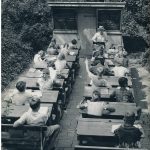 experiments. The movement had an influence on the evolution of education, hygiene, and architecture. School buildings, for example, adopted the concept of classes open to the outdoors, as in Bale, Switzerland (1938–1939, architect Hermann Baur), Impington, England (1939, Walter Gropius and Maxwell Fry), and in Los Angeles (1935, Richard Neutra). This influence is the major contribution of the open air schools movement, although the introduction of antibiotics, which increasingly provided a cure for Tuberculosis, pretty much made them obsolete after World War II. Nevertheless, fresh air, exercise, and playtime for young children have all remained an important part of the school day, and thankfully, Tuberculosis is on the decline, although it still ranks in the top 10 of fatal diseases.
experiments. The movement had an influence on the evolution of education, hygiene, and architecture. School buildings, for example, adopted the concept of classes open to the outdoors, as in Bale, Switzerland (1938–1939, architect Hermann Baur), Impington, England (1939, Walter Gropius and Maxwell Fry), and in Los Angeles (1935, Richard Neutra). This influence is the major contribution of the open air schools movement, although the introduction of antibiotics, which increasingly provided a cure for Tuberculosis, pretty much made them obsolete after World War II. Nevertheless, fresh air, exercise, and playtime for young children have all remained an important part of the school day, and thankfully, Tuberculosis is on the decline, although it still ranks in the top 10 of fatal diseases.
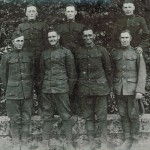 This day…Armistice Day was sometimes called the end of the war to end all wars. The phrase came from a book, and was really an idealistic statement, because as we all know there will always be a war somewhere. Nevertheless, it must have been overwhelming to think of basically the whole world at war. I’m sure the writer of the book, H G Wells, as well as many other people, hoped that through this awful war, humans could somehow learn to live with one another in peace. While that was not to be, this war, like every war, finally comes to an end. Armistice Day marks the armistice signed between the Allies of World War I and Germany at Compiègne, France, for the cessation of hostilities on the Western Front of World War I, which took effect at eleven o’clock in the morning, on the “eleventh hour of the eleventh day of the eleventh month” of 1918. That was, of course, 100 years ago today. Armistice Day is a national holiday in France. It coincides with Remembrance Day in England, and Veterans Day in the United States, and all three are really commemorating the same thing…the end of World War I. And all three are observed as a time to remember those heroes who served their country in that and all other wars. It is a day to remember those who fought and
This day…Armistice Day was sometimes called the end of the war to end all wars. The phrase came from a book, and was really an idealistic statement, because as we all know there will always be a war somewhere. Nevertheless, it must have been overwhelming to think of basically the whole world at war. I’m sure the writer of the book, H G Wells, as well as many other people, hoped that through this awful war, humans could somehow learn to live with one another in peace. While that was not to be, this war, like every war, finally comes to an end. Armistice Day marks the armistice signed between the Allies of World War I and Germany at Compiègne, France, for the cessation of hostilities on the Western Front of World War I, which took effect at eleven o’clock in the morning, on the “eleventh hour of the eleventh day of the eleventh month” of 1918. That was, of course, 100 years ago today. Armistice Day is a national holiday in France. It coincides with Remembrance Day in England, and Veterans Day in the United States, and all three are really commemorating the same thing…the end of World War I. And all three are observed as a time to remember those heroes who served their country in that and all other wars. It is a day to remember those who fought and 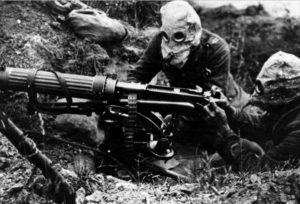 then returned home, but we can’t forget those who didn’t return home either.
then returned home, but we can’t forget those who didn’t return home either.
Because World War I ended on November 11, 1918, we have continued to remember November 11 as Veterans Day, Armistice Day, and Remembrance Day in honor of our soldiers. The armistice initially expired after a period of 36 days. A formal peace agreement was only reached when the Treaty of Versailles was signed the following year, but the Armistice was the beginning. It paved the way, and sometimes that is what is needed the most at a certain low time in history, or in life. Just a glimmer of hope can change the way we feel about things in a big way. It doesn’t matter what name is attached to the day, its all about the meaning of the day that matters. Our veterans have done so much for people they don’t even know, and they all deserve to be recognized for their very heroic acts.
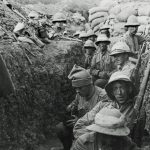 The date is a national holiday in France, England, the United States, and was also declared a national holiday in many Allied nations. In some countries Armistice Day coincides with Remembrance Day and Veterans Day, and other public holidays. Armistice Day is not celebrated in Germany, but a German national day of mourning, Volkstrauertag, has been observed on the Sunday closest to 16 November since 1952. However the day is observed, it is always a day to remember the sacrifice of our soldiers. The day is always celebrated as a day to honor those who served. We can all relate to that, because we all know a veteran, and we all consider them to be honorable people. So, no matter how each country celebrates it or what they call it, we honor our veterans today. Happy Veterans Day!!
The date is a national holiday in France, England, the United States, and was also declared a national holiday in many Allied nations. In some countries Armistice Day coincides with Remembrance Day and Veterans Day, and other public holidays. Armistice Day is not celebrated in Germany, but a German national day of mourning, Volkstrauertag, has been observed on the Sunday closest to 16 November since 1952. However the day is observed, it is always a day to remember the sacrifice of our soldiers. The day is always celebrated as a day to honor those who served. We can all relate to that, because we all know a veteran, and we all consider them to be honorable people. So, no matter how each country celebrates it or what they call it, we honor our veterans today. Happy Veterans Day!!
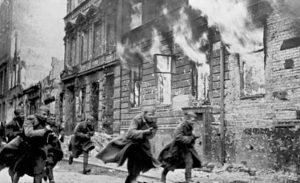 Kristallnacht, translated “Crystal Night,” referred to as the Night of Broken Glass, was an atrocious pogrom against Jews throughout Nazi Germany that took place on November 9–10, 1938. It was carried out by Sturmabteilung (SA) paramilitary forces and civilians. The German authorities looked on without intervening as the mobs tore through the towns. The attacks were said to be retaliation for the assassination of the Nazi German diplomat Ernst vom Rath by Herschel Grynszpan, a seventeen year old German-born Polish Jew living in Paris. I guess I don’t understand why the act of one person should cost the lives of so many.
Kristallnacht, translated “Crystal Night,” referred to as the Night of Broken Glass, was an atrocious pogrom against Jews throughout Nazi Germany that took place on November 9–10, 1938. It was carried out by Sturmabteilung (SA) paramilitary forces and civilians. The German authorities looked on without intervening as the mobs tore through the towns. The attacks were said to be retaliation for the assassination of the Nazi German diplomat Ernst vom Rath by Herschel Grynszpan, a seventeen year old German-born Polish Jew living in Paris. I guess I don’t understand why the act of one person should cost the lives of so many.
The name Kristallnacht comes from the shards of broken glass that littered the streets after the windows of Jewish-owned stores, buildings, and synagogues were smashed. Of course, the carnage didn’t stop with the windows. Estimates of the number of fatalities caused by the pogrom have varied. Reports in 1938 estimated that 91 Jews were murdered during the attacks, but modern analysis of German scholarly sources by historians such as Sir Richard Evans puts the number much higher. It also includes deaths 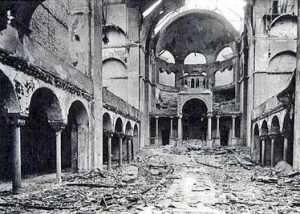 from post-arrest maltreatment and subsequent suicides as well, and puts the death toll into the hundreds. Additionally, 30,000 Jewish men were arrested and incarcerated in concentration camps. The numbers of those killed there are unknown, but we can easily imagine based on what we know of the Holocaust.
from post-arrest maltreatment and subsequent suicides as well, and puts the death toll into the hundreds. Additionally, 30,000 Jewish men were arrested and incarcerated in concentration camps. The numbers of those killed there are unknown, but we can easily imagine based on what we know of the Holocaust.
Breaking windows wasn’t enough for these mobs either. Jewish homes, hospitals, and schools were ransacked, as the attackers demolished buildings with sledgehammers. The rioters destroyed 267 synagogues throughout Germany, Austria, and the Sudetenland, and over 7,000 Jewish businesses were either destroyed or damaged. The British historian Martin Gilbert wrote that no event in the history of German Jews between 1933 and 1945 was so widely reported as it was happening, and the accounts from the foreign journalists working in Germany sent shock waves around the world. At that time it was still hard to believe that mobs of lawless people could 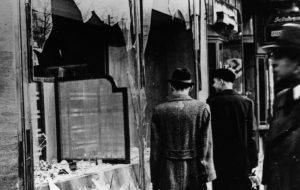 exist, but that was 80 years ago. These days we have no problem believing it, because these actions are almost commonplace.
exist, but that was 80 years ago. These days we have no problem believing it, because these actions are almost commonplace.
The British newspaper The Times wrote at the time: “No foreign propagandist bent upon blackening Germany before the world could outdo the tale of burnings and beatings, of blackguardly assaults on defenseless and innocent people, which disgraced that country yesterday.” Kristallnacht was followed, of course, by additional economic and political persecution of Jews, and it is viewed by historians as part of Nazi Germany’s broader racial policy, and the beginning of the Final Solution and The Holocaust.
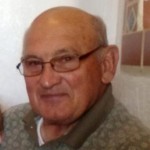 I didn’t know my husband’s Uncle Butch Schulenberg when he was young of course, but I have had the opportunity to get to know him over the past few years, and I feel very privileged to know him. He is a kind and loving man, who loves his family very much. I think that when it comes to his grandchildren, he is probably a big teddy bear, and I think they all know it. Of course, he would never admit it, but his family knows.
I didn’t know my husband’s Uncle Butch Schulenberg when he was young of course, but I have had the opportunity to get to know him over the past few years, and I feel very privileged to know him. He is a kind and loving man, who loves his family very much. I think that when it comes to his grandchildren, he is probably a big teddy bear, and I think they all know it. Of course, he would never admit it, but his family knows.
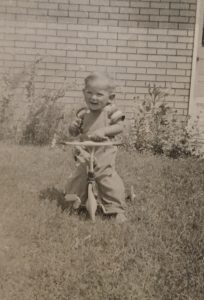
As a young boy though, the youngest of his dad’s children, I think he must have been quite a kid. I don’t know if growing up as the sheriff’s son would have made him think he could get away with more than most people, but I think he might have had a side of him that might consider trying it to see how things went. Of course, not as a little boy. From what I’ve seen in the pictures he let me copy, he was a little boy who maybe liked his wheels. I found a picture of him on his tricycle, and later a picture of him with a car. The boy going from one set of wheels to another. It looked like a 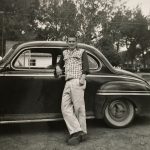 pretty nice car to me. I imagine he was well liked in high school…and I can see why people liked him, because he is a very likable guy.
pretty nice car to me. I imagine he was well liked in high school…and I can see why people liked him, because he is a very likable guy.
Not much has changed with Butch, at least not in his personality. He is still the kind of guy you want to be around. He always has nice things to say about people, and he always makes you feel welcome. Anyone who knows him feels blessed to know him. I haven’t known him well for my whole time in this family, but I consider him to be one of my very favorite people. And today is Butch’s birthday. Happy birthday Butch!! Have a great day!! We love you!!
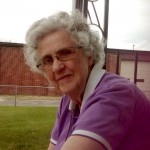 My mom always had quite a bit in common with her older sister, Evelyn Hushman. My mom was close to all her sisters, but she and Aunt Evelyn had things in common that she maybe didn’t with some of the other sisters. I think it’s possible that it was their husbands got along very well. In fact, even before my mom was married, my parents, Al and Collene Spencer double dated with Aunt Evelyn, and her husband, my Uncle George. After both couples were married and had children, we all spent lots of time together. I remember growing up playing with the Hushman kids, and because they
My mom always had quite a bit in common with her older sister, Evelyn Hushman. My mom was close to all her sisters, but she and Aunt Evelyn had things in common that she maybe didn’t with some of the other sisters. I think it’s possible that it was their husbands got along very well. In fact, even before my mom was married, my parents, Al and Collene Spencer double dated with Aunt Evelyn, and her husband, my Uncle George. After both couples were married and had children, we all spent lots of time together. I remember growing up playing with the Hushman kids, and because they 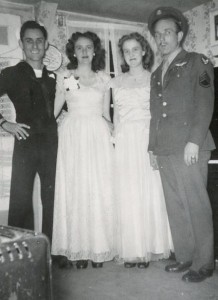 were all a little bit older than I was, they usually set the tone for the games. It didn’t matter, because it was always fun.
were all a little bit older than I was, they usually set the tone for the games. It didn’t matter, because it was always fun.
Later, my parents bowled on the same team on Monday nights with Aunt Evelyn and Uncle George. They bowled together for a number of years, and then they decided to quit, with the exception of Aunt Evelyn, who bowled for many years after. In fact, when she was bowling with her daughters, I substituted on their team many times. I enjoyed bowling with them, because it kept our families close.
As the years went by, they quit bowling too, and I began to see less and less of Aunt Evelyn. That made me sad. Everyone is so busy thee days, and before you know it, the ones you love have grown into their latter  years, and you find yourself wondering where the time has gone. That was where I found myself with Aunt Evelyn, seeing her at the family Christmas party and the annual family picnic, and then not even at those. When Aunt Evelyn passed away on May 4, 2015, just a little over two months after my mom passed away, I found myself feeling very sad and lonely, because we had lost them both within such a short time, but I guess the sisters, who always had so much in common, were together again, and enjoying their new lives. Today would have been Aunt Evelyn’s 90th birthday. Happy birthday in Heaven Aunt Evelyn. We love and miss you very much.
years, and you find yourself wondering where the time has gone. That was where I found myself with Aunt Evelyn, seeing her at the family Christmas party and the annual family picnic, and then not even at those. When Aunt Evelyn passed away on May 4, 2015, just a little over two months after my mom passed away, I found myself feeling very sad and lonely, because we had lost them both within such a short time, but I guess the sisters, who always had so much in common, were together again, and enjoying their new lives. Today would have been Aunt Evelyn’s 90th birthday. Happy birthday in Heaven Aunt Evelyn. We love and miss you very much.
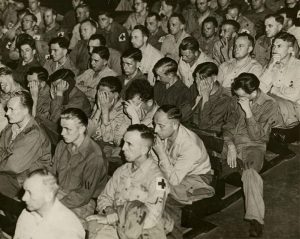 A couple of days ago, I wrote a story about the denazification process that took place in post-World War II Germany and in the American concentration camps. while the story inspired thoughts of horror as the German soldiers discovered the truth about the atrocities of Hitler, it also made me a couple of my readers think about events that are far more recent. the feelings that American citizens have against each other in these tumultuous times in which we live. It makes me wonder, just how we got here. Of course, it’s the same way the Nazis got to where they were…hatred.
A couple of days ago, I wrote a story about the denazification process that took place in post-World War II Germany and in the American concentration camps. while the story inspired thoughts of horror as the German soldiers discovered the truth about the atrocities of Hitler, it also made me a couple of my readers think about events that are far more recent. the feelings that American citizens have against each other in these tumultuous times in which we live. It makes me wonder, just how we got here. Of course, it’s the same way the Nazis got to where they were…hatred.
Nevertheless, I think there is a bigger problem in this day and age, because along with the hatred there is a civil war of sorts going on. The political controversy between Republicans and Democrats has taken a turn toward different forms of hatred. My readers cited the recent shootings at a Jewish temple in Pennsylvania, which very much reminds us of the hatred that Hitler had for the Jewish people, but that isn’t all there is to it. Slavery was abolished many years ago,and or many years racism was practically gone in America, then suddenly because of the rhetoric of a president who was set upon stirring up racism again for his own agenda, we are suddenly faced with that kind of hatred again. The hatred doesn’t follow race either. Along with the the racial fighting we have now, came the hatred for certain groups such as the military and the police.
In fact, this latest version of nazi’ism for lack of a better word, seemed to authorize the hatred of anything we didn’t agree with. To top it off, we have video games that make killing seen like a game, and mobs seem like  fun. There are even games played with text messages to bring mobs together to terrorize. People have been so desensitized to death from television, games, and movies, that I’m not even sure that making people sit and watch a movie showing what was happening would really change anything. The news already does that, and we have become used to that too. So, how do we change this present world from one in which hatred is the excepted normal to one that understands the value of life…all life, not just one race or one group. Of course, the only real way to do that is to learn to love each other. Will that stop the political wrangling? Probably not, but if we realize that we can have a difference of opinion and still love each other, maybe we can move in that direction.
fun. There are even games played with text messages to bring mobs together to terrorize. People have been so desensitized to death from television, games, and movies, that I’m not even sure that making people sit and watch a movie showing what was happening would really change anything. The news already does that, and we have become used to that too. So, how do we change this present world from one in which hatred is the excepted normal to one that understands the value of life…all life, not just one race or one group. Of course, the only real way to do that is to learn to love each other. Will that stop the political wrangling? Probably not, but if we realize that we can have a difference of opinion and still love each other, maybe we can move in that direction.
 Over the years of my marriage to my husband, Bob, I have had the great privilege to know his family, both here in Casper, Wyoming, in Forsyth, Montana, and other areas of the United States. I can tell you that they are all wonderful, hard working people, and upstanding citizens. Bob’s uncle, Eddie Hein, like Bob and his dad, Walt Schulenberg, worked in the mines in the area they lived in. They didn’t work in the same mines, but they were all in mining. For those who don’t know, mining is hard work…no matter what part of mining you are in. From the people who keep the
Over the years of my marriage to my husband, Bob, I have had the great privilege to know his family, both here in Casper, Wyoming, in Forsyth, Montana, and other areas of the United States. I can tell you that they are all wonderful, hard working people, and upstanding citizens. Bob’s uncle, Eddie Hein, like Bob and his dad, Walt Schulenberg, worked in the mines in the area they lived in. They didn’t work in the same mines, but they were all in mining. For those who don’t know, mining is hard work…no matter what part of mining you are in. From the people who keep the 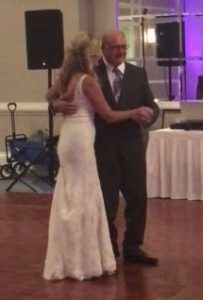 equipment running, to the operators of the equipment, each plays a vital role in the mining process. Eddie worked in the mines for a long time, and was a valued member of the crew.
equipment running, to the operators of the equipment, each plays a vital role in the mining process. Eddie worked in the mines for a long time, and was a valued member of the crew.
When Eddie came home from work, the work didn’t just stop. Eddie worked a lot over the years to remodel their home. What started out as a little house, slowly grew into a beautiful home. I was especially impressed with the beautiful fireplace he built. The rock work was stunning, and it added an elegant touch to the house. 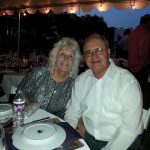 Eddie worked hard to make his house into a great home for his family. It was a place that we all enjoyed visiting whenever we made the trip to Forsyth.
Eddie worked hard to make his house into a great home for his family. It was a place that we all enjoyed visiting whenever we made the trip to Forsyth.
Eddie was always a symbol of strength and stability to everyone who knew him, and is still a source of inspiration today. Following a stroke,Eddie worked his way back to health, and was able to take the trip to Miramar Beach, Florida to walk his daughter Kim down the isle on her wedding day. It was a happy day for all. Today is Eddie’s 75th birthday. Happy birthday Eddie!! Have a great day!! We love you!!
 Everyone knows the horrors of the Nazi regime, but few people can say that while they thought it was all a part of war, until one day they were forced to see it for what it really was…horrible. These soldiers honestly thought that the concentration camps were no different than the prisoner of war camps they were in, but when they saw the truth, it made them sick. They were forced to face the awful truth that their leader was a complete monster…and worse yet, that they could do nothing to stop his tirade. This forced confrontation brought Germans face-to-face with the worst works of the Third Reich. I can’t imagine the horror of finding out that human beings were being murdered in the gas chambers. The absolute horror of it shows on the faces of the prisoners of war in the United States camps, as they compared the treatment they received at our hands, to what the Nazis were doing to the Jewish people.
Everyone knows the horrors of the Nazi regime, but few people can say that while they thought it was all a part of war, until one day they were forced to see it for what it really was…horrible. These soldiers honestly thought that the concentration camps were no different than the prisoner of war camps they were in, but when they saw the truth, it made them sick. They were forced to face the awful truth that their leader was a complete monster…and worse yet, that they could do nothing to stop his tirade. This forced confrontation brought Germans face-to-face with the worst works of the Third Reich. I can’t imagine the horror of finding out that human beings were being murdered in the gas chambers. The absolute horror of it shows on the faces of the prisoners of war in the United States camps, as they compared the treatment they received at our hands, to what the Nazis were doing to the Jewish people.
An important part of keeping moral up in any war is making sure that the people believe that what their nation is doing, is the right thing. To find out that their nation…their leader, Hitler…was involved in the unwarranted killing of human beings, just because these people were a race they did not like, had to have been such a shock…a sickening shock. This forced process was part of the Allied policy known as denazification, which was designed to to purge Germany of the remnants of Nazi rule and rebuild its civil society, infrastructure, and economy. The program included actual visits to nearby concentration camps. Posters displaying dead bodies of prisoners hung in public places, and forced German prisoners of war to view films documenting the Nazis’ treatment of “inferior” people. The German people had to be changed. They had to realize that Hitler’s evil agenda could not continue. The only way to do that was to change the hearts of men. The best way to change the hearts of men is to show them the horrible truth that they have been lied too and taken advantage of.
While such a harsh method designed to facilitate change was necessary, I must think that it was as hard on the Americans as it was on the Germans. I don’t think anyone could easily watch such horrible murders, without feeling something…except maybe Hitler and his serious henchmen. I still believe that the majority of human beings cannot easily stomach blatant hatred, and horrific murder. I can’t say exactly how big an impact the denazification efforts had at that time in history, but I believe that it was huge. The reason is that the German 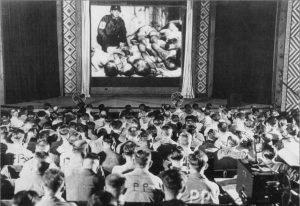 soldiers weren’t necessarily Nazis, and the Holocaust was just one side of the World War II. They were also fighting for territory and power. Strong nationalistic feelings were quite normal back then. Oddly, no conflict existed between not following the Nazis and fighting for the “good of your Fatherland.” Some soldiers were Nazis, some just wanted revenge for Versailles, others wanted to sit at the same table as France and Britain. And many followed because they had no other choice. It was a very strange situation, and one that had to be changed. It may not have been a humane way to bring change, but it was all they could do, so denazification was what they did…and at that time, it worked.
soldiers weren’t necessarily Nazis, and the Holocaust was just one side of the World War II. They were also fighting for territory and power. Strong nationalistic feelings were quite normal back then. Oddly, no conflict existed between not following the Nazis and fighting for the “good of your Fatherland.” Some soldiers were Nazis, some just wanted revenge for Versailles, others wanted to sit at the same table as France and Britain. And many followed because they had no other choice. It was a very strange situation, and one that had to be changed. It may not have been a humane way to bring change, but it was all they could do, so denazification was what they did…and at that time, it worked.
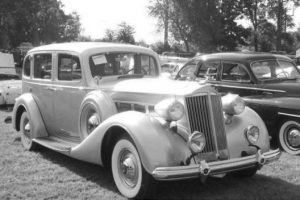 These days, driving our cars everywhere we go, there are certain amenities in our cars that we take for granted, but that in reality, we just couldn’t live without. One of those amenities is the automobile air conditioner. Summers would be just miserable without air conditioning in the car. While a company in New York City first offered installation of air conditioning for cars in 1933. Most of their customers operated limousines and luxury cars. I don’t suppose too many people could afford to add that to their car. Then, in 1939, Packard became the first automobile manufacturer to offer an air conditioning unit in its cars. I’m sure that everyone who could afford to buy a car that year, was really excited about the possibilities.
These days, driving our cars everywhere we go, there are certain amenities in our cars that we take for granted, but that in reality, we just couldn’t live without. One of those amenities is the automobile air conditioner. Summers would be just miserable without air conditioning in the car. While a company in New York City first offered installation of air conditioning for cars in 1933. Most of their customers operated limousines and luxury cars. I don’t suppose too many people could afford to add that to their car. Then, in 1939, Packard became the first automobile manufacturer to offer an air conditioning unit in its cars. I’m sure that everyone who could afford to buy a car that year, was really excited about the possibilities.
The cars were manufactured by Bishop and Co, of Cleveland, Ohio. The “Bishop and Babcock Weather Conditioner” also incorporated a heater. This looked like a perfect car. Cars ordered with the new “Weather Conditioner” were shipped from Packard’s East Grand Boulevard facility to the B&B factory where the conversion was performed. Once complete, the car was shipped to a local dealer where the customer would take delivery. There were some drawbacks, however. When you think about automobile air conditioning and heat, you immediately think what drawback could there be?
Packard fully warranted and supported this conversion, and marketed it well. However, it was not commercially successful for a number of reasons. The main evaporator and blower system took up half of the trunk space. That problem was alleviated as trunks became larger in the post-war period. The system became outdated by more efficient systems in the post-war years. The original system had no temperature thermostat or shut-off 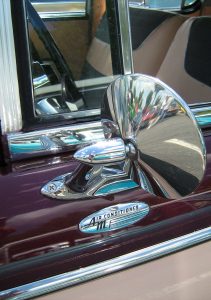 mechanism other than switching the blower off, and even with the switch off, cold air would still sometimes enter the car with any movement as the drive belt was continuously connected to the compressor. Systems designed later would use electrically operated clutches to remedy this problem. The several feet of plumbing going back and forth between the engine compartment and trunk proved unreliable in service. Probably the biggest deterrent was the price, at $274, which would be over $4,692.12 in 2014 US dollars today, it was not affordable to most people in post-depression/pre-war America, but I doubt if the fact that you had to turn off the engine and get out of the car to flip the switch, located in the trunk made it impractical for the most part, and because it also had to be turned off the same way,and with no adjustment, it was something you had to do often. The option was discontinued after 1941. Of course, as you all know, while this version was discontinued in 1941, the air conditioner was not, because we all have a much more efficient version in our automobiles today.
mechanism other than switching the blower off, and even with the switch off, cold air would still sometimes enter the car with any movement as the drive belt was continuously connected to the compressor. Systems designed later would use electrically operated clutches to remedy this problem. The several feet of plumbing going back and forth between the engine compartment and trunk proved unreliable in service. Probably the biggest deterrent was the price, at $274, which would be over $4,692.12 in 2014 US dollars today, it was not affordable to most people in post-depression/pre-war America, but I doubt if the fact that you had to turn off the engine and get out of the car to flip the switch, located in the trunk made it impractical for the most part, and because it also had to be turned off the same way,and with no adjustment, it was something you had to do often. The option was discontinued after 1941. Of course, as you all know, while this version was discontinued in 1941, the air conditioner was not, because we all have a much more efficient version in our automobiles today.
 It is so hard to believe that another year has passed since my grand niece, Laila Spethman was born, back in 2010. I suppose the years would have been less shocking if we had been able to watch Laila grow up, but that was not to be, because just 18 days later, Laila went to Heaven, and our hearts were broken. This year, Laila would have turned 8, and she would have known her brothers, Xander, Zack, and Isaac, as well as her little sister Aleesia. It’s hard and yet pretty easy to imagine what Laila might have been like today. My guess is that she and her little sister would have been two of a kind. While it would have been Laila teaching Aleesia how to be the goofy little
It is so hard to believe that another year has passed since my grand niece, Laila Spethman was born, back in 2010. I suppose the years would have been less shocking if we had been able to watch Laila grow up, but that was not to be, because just 18 days later, Laila went to Heaven, and our hearts were broken. This year, Laila would have turned 8, and she would have known her brothers, Xander, Zack, and Isaac, as well as her little sister Aleesia. It’s hard and yet pretty easy to imagine what Laila might have been like today. My guess is that she and her little sister would have been two of a kind. While it would have been Laila teaching Aleesia how to be the goofy little  girl they both would have been, I have to think that Aleesia would have taught Laila a thing or two as well. The two little girls, younger sisters of three brothers, would have grown up much like Aleesia has…well able to handle life as a girl with older brothers…part Tomboy and part Princess.
girl they both would have been, I have to think that Aleesia would have taught Laila a thing or two as well. The two little girls, younger sisters of three brothers, would have grown up much like Aleesia has…well able to handle life as a girl with older brothers…part Tomboy and part Princess.
It always makes me sad that Laila never got the chance to become that little girl who was a perfect mix…just like her little sister. Instead, Laila will always be the little princess and sleeping beauty, waiting in Heaven for  the day when we all meet her there and get to know her. Until then, she is missed very much, and loved so much. I would say that she was loved more than she could know, but I think she knows now. And while she loves us all too, right now she is busy getting to know her grandparents and great grandparents who are in Heaven with her. And there is no sadness there, because Laila knows that we will all be together again in Heaven, and that this time apart is like a drop in a bucket. While we view the years as long and many, she sees them as only seconds ago. Today would have been Laila’s 8th birthday. Happy birthday in Heaven Lila. We love and miss you very much.
the day when we all meet her there and get to know her. Until then, she is missed very much, and loved so much. I would say that she was loved more than she could know, but I think she knows now. And while she loves us all too, right now she is busy getting to know her grandparents and great grandparents who are in Heaven with her. And there is no sadness there, because Laila knows that we will all be together again in Heaven, and that this time apart is like a drop in a bucket. While we view the years as long and many, she sees them as only seconds ago. Today would have been Laila’s 8th birthday. Happy birthday in Heaven Lila. We love and miss you very much.

